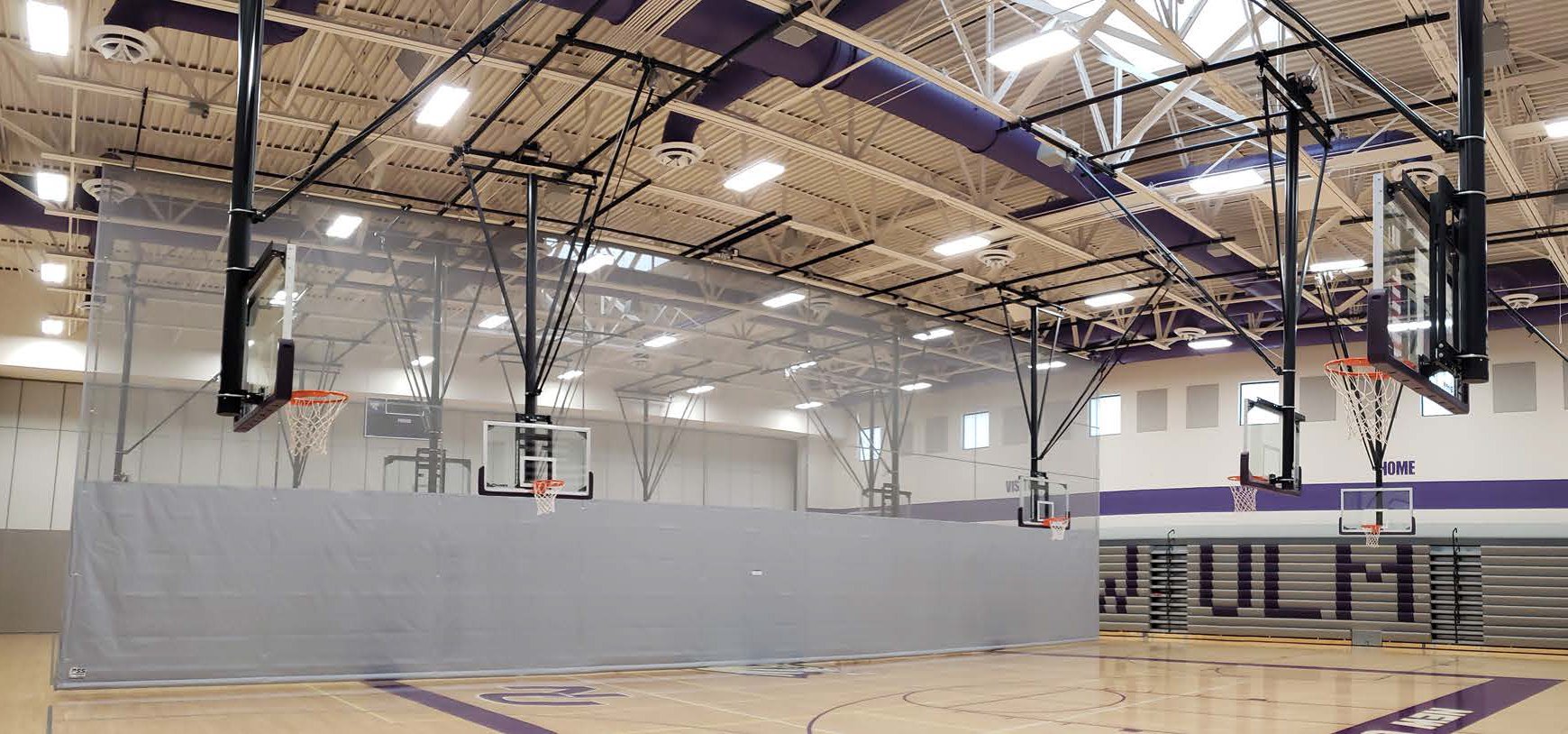Gym Equipment Maintenance: 6 Products That Should Be Inspected Regularly
Does your gymnasium often have faulty or broken sports equipment that interrupts games and practices and keeps fans from enjoying the action? Are you constantly being burdened with numerous costly repairs or replacements? If these scenarios are all too familiar, it’s never too late to start an equipment maintenance program in your facility!
It’s important to routinely inspect all of your sports equipment to assess its condition and repair promptly if needed. Regular maintenance will save you money in the long run by preventing expensive repairs or replacements down the line and will extend the lifespan of your equipment to provide years of safe, worry-free use. In fact, most manufacturers will require your equipment to be inspected on an annual basis or product warranties may be voided. Be sure to keep a log of all maintenance inspections and repairs, and retain copies of warranty documents in the event of a manufacturing defect. Most importantly, always follow the manufacturer’s recommendations regarding proper operation, maintenance, and referrals for certified repair individuals.
Below we will take a look at six common gymnasium products that need to be routinely inspected for safety and performance.
OVERHEAD AND WALL-MOUNTED STRUCTURES
Overhead and wall-mounted structures include any pipes or masts that are connected to the ceiling or walls, such as ceiling-suspended and wall-mounted basketball hoops, ceiling-hung volleyball systems, batting cages, and mat storage systems. A certified installer will need to visually inspect all pipes to ensure that the finish has not worn, exposing the steel and allowing for rust to accumulate. In addition, all bolts should be torqued to the recommended tightening torque noted by the manufacturer. Pulleys will also need to be examined to make sure they are aligned and that any cables are tracking properly.
BASKETBALL RIMS
Rims should be routinely checked for proper playing height, especially in competition play settings. Bolts should be tightened, and moving parts such as coils or springs must be lubricated to ensure proper operation. In addition, net attachment should also be checked regularly to prevent hand injuries and unnecessary pulling of the net away from the rim.
BACKBOARD HEIGHT ADJUSTERS
Whether they are manually or electrically-operated, height adjusters need to be serviced at least once a year. All moving parts are to be lubricated per the manufacturer’s instructions to allow for smooth operation and prevent damage to the equipment.
PADDING
Equipment padding plays an important part in protecting athletes from injury, so all pads in your gym should be inspected on a regular basis. Pads can be found on basketball backboards, volleyball uprights and referee stands, indoor soccer goals, and on walls, columns, and beams in your facility. Check all attachment hardware, such as bolts, clips, brackets, Velcro, or straps, to ensure pads are securely fastened so they cannot be accidentally removed during play. Examine pads for holes, tears, or worn spots and replace promptly if necessary.
DIVIDER CURTAINS
Examine the curtain fabric for tears or holes. A small tear can easily be patched on most models, but if left unattended, it can get bigger in size and become much costlier to replace down the line. Depending on the location, tears can also pose a tripping hazard to players and fans. In addition, if the curtain uses cables or belts, check to make sure they are “in line” and not running through the designed grommet layout, which will prevent unnecessary wear. Also inspect for fraying of belts and cables, which can weaken the integrity of the curtain material.
BLEACHERS
Bleachers are one of the most utilized portions of a gymnasium, so it’s important that they are maintained properly to provide safe and enjoyable seating for players, fans, and visitors. Check to make sure all seats are sturdy and free of obstructions. Examine all seat and foot planks for sharp metal edges or protrusions. Portable and transportable bleacher wheels and motors must also be inspected regularly to ensure proper operation. In addition, make sure folding bleachers fold properly when in the stored position, and store bleachers against the wall whenever possible to prevent misuse or damage when not in use.
A.U.D.I.T SAFETY PROGRAM
We understand that keeping up with gymnasium equipment can be a difficult task. While the ASTM international agency provides standards for many indoor sports products, and the CPSC offers standards for playgrounds, there is no regulatory agency in place for inspecting sports courts and fields, leaving many facility managers with the burden of managing risk on their own. That’s where our All-Star A.U.D.I.T program comes in. Our All-Star team can offer a comprehensive “look under the hood” of your gymnasium to ensure that all equipment is operating correctly and to recommend necessary repairs or replacements. Our dealers will inspect ceiling-suspended, wall-mounted or portable basketball backstops, backboards, rims, padding, bleachers, divider curtains, batting cages, and much more. Click here to learn more about our All-Star A.U.D.I.T Maintenance and Safety Program, and let us help you get your gym safe and ready for action!

